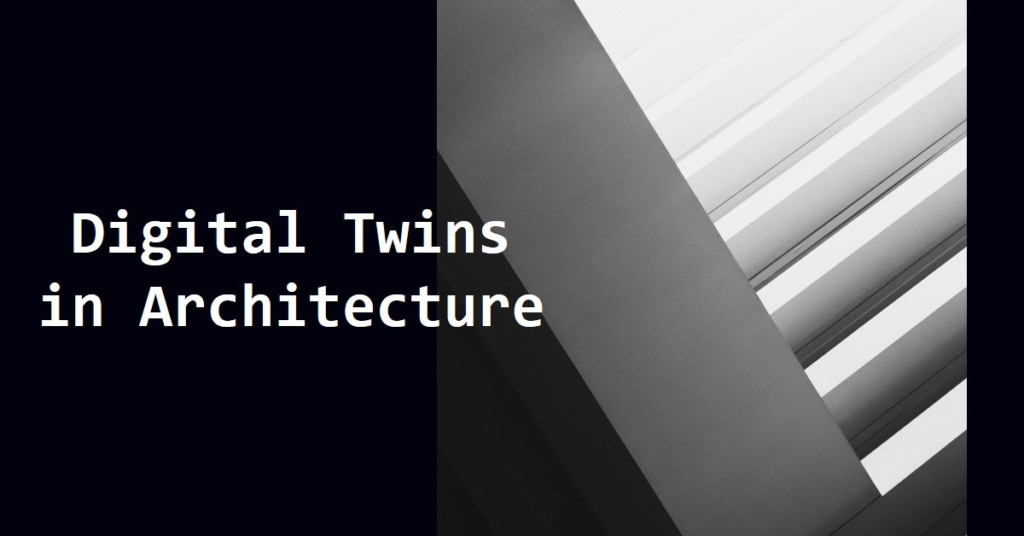
Table of Contents
- Introduction to Digital Twins
- The Role of Digital Twins in Modern Architecture
- Benefits of Digital Twins in Architectural Design
- Optimizing Energy Efficiency
- Reducing Waste
- Ensuring Environmental Compliance
- Simulating Environmental Conditions
- Improving Operational Efficiency and Maintenance
- Challenges in Implementing Digital Twins
- Future Trends and Innovations
- Conclusion
Introduction to Digital Twins
Digital twins are an innovative technological concept that has significantly impacted various industries, including architecture. At its core, a digital twin is a virtual replica of a physical entity, such as a building or infrastructure. This digital counterpart is created using real-time data and sophisticated simulations to mirror the physical object’s characteristics and behavior. The origins of digital twins can be traced back to the early 2000s when NASA pioneered the concept to improve spacecraft performance and reliability.
In the realm of architecture, digital twins serve as comprehensive models that provide invaluable insights into the design, construction, and management of buildings. These models enable architects and engineers to visualize and analyze the structure’s performance under various conditions, thereby enhancing decision-making processes. The creation and maintenance of digital twins are facilitated by advancements in technologies such as the Internet of Things (IoT) and Artificial Intelligence (AI).
IoT plays a crucial role in the development of digital twins by providing a continuous stream of real-time data from various sensors embedded within the physical entity. This data can include information on temperature, humidity, energy consumption, and structural integrity, among other parameters. AI, on the other hand, enables the processing and analysis of this vast amount of data, offering predictive insights and optimizing the performance of the digital twin.
The integration of digital twins in architecture not only enhances the accuracy and efficiency of the design and construction phases but also contributes to the sustainable management of buildings. By simulating different scenarios and predicting potential issues, architects can make informed decisions that minimize risks and costs while maximizing functionality and sustainability. As technology continues to evolve, the adoption of digital twins in the architectural sector is expected to grow, paving the way for smarter and more resilient built environments.
The Role of Digital Twins in Modern Architecture
Digital twins are revolutionizing the architecture industry by providing a dynamic and interactive virtual representation of physical buildings. These digital replicas are instrumental in various phases of architectural projects, from the initial planning and design to ongoing maintenance. By leveraging digital twins, architects can visualize and simulate structures before construction, enhancing precision and mitigating potential errors.
In the planning phase, digital twins enable architects to create comprehensive models that incorporate real-world data. This allows for a more accurate assessment of the project’s feasibility and potential challenges. Through these virtual models, architects can experiment with different design elements, materials, and layouts, ultimately optimizing the building’s functionality and aesthetics.
During the design phase, digital twins facilitate a collaborative environment where architects, engineers, and stakeholders can interact with the model in real-time. This collaborative approach ensures that all parties have a clear understanding of the project’s vision and can provide input to refine the design. Additionally, digital twins allow for the simulation of various environmental conditions, such as lighting, acoustics, and energy efficiency, ensuring that the final design is both sustainable and practical.
Once construction is underway, digital twins continue to play a crucial role in the maintenance phase. These virtual models are updated with real-time data from sensors embedded in the building, providing continuous monitoring of the structure’s performance. This proactive approach to maintenance helps identify issues before they become critical, reducing downtime and repair costs. Moreover, digital twins can be used to plan and execute renovations, ensuring that changes are seamlessly integrated into the existing structure.
Overall, digital twins are an invaluable tool in modern architecture, offering a comprehensive solution that enhances the accuracy, efficiency, and sustainability of architectural projects. By incorporating digital twins into their workflow, architects can better visualize, design, and maintain buildings, ultimately delivering higher quality and more cost-effective structures.
Benefits of Digital Twins in Architectural Design
Digital twins, virtual replicas of physical entities, have significantly transformed the field of architecture. One of the most pronounced benefits is the enhancement of accuracy in architectural projects. By creating a precise digital counterpart, architects can simulate and analyze the performance of a building before actual construction begins. This capability leads to the identification and rectification of potential issues early in the design process, thus ensuring a higher degree of accuracy and reducing costly errors.
Another substantial advantage is the improved collaboration among stakeholders. The digital twin of a project serves as a single source of truth, accessible to architects, engineers, contractors, and clients. This unified platform fosters better communication and coordination, enabling stakeholders to provide input and make informed decisions in real-time. Consequently, the collaborative process becomes more streamlined, transparent, and effective.
Efficiency in project management is also notably enhanced through the use of digital twins. These virtual models facilitate meticulous planning and monitoring of construction activities. Project managers can track progress, manage resources, and foresee potential delays by leveraging real-time data from the digital twin. This proactive approach results in more efficient project timelines and optimized resource utilization.
Moreover, digital twins allow for the testing of various design scenarios without any physical implications. Architects can experiment with different materials, layouts, and environmental factors to evaluate their impact on the building’s performance. This flexibility enables the exploration of innovative designs and sustainable solutions. For instance, the Marina Bay Sands in Singapore utilized digital twin technology to optimize its design and construction processes, achieving unprecedented architectural excellence.
Incorporating digital twins in architecture not only enhances precision and collaboration but also streamlines project management and fosters innovative design solutions. As the technology continues to evolve, its role in shaping the future of architectural design will undoubtedly expand.
Digital twins are revolutionizing the field of architecture by significantly enhancing sustainability. By creating a virtual replica of a physical structure, architects can leverage digital twins to optimize energy efficiency, reduce waste, and ensure compliance with environmental standards. This advanced technology allows for a comprehensive analysis of a building’s performance in real-time, providing invaluable insights into its energy consumption and environmental impact.
Optimizing Energy Efficiency
One of the primary benefits of digital twins in sustainable architecture is the ability to optimize energy efficiency. Through detailed simulations, architects can analyze how different materials, designs, and technologies will affect a building’s energy performance. For instance, digital twins can model various heating, ventilation, and air conditioning (HVAC) systems to determine which configuration would minimize energy usage. This proactive approach enables architects to make data-driven decisions that enhance a building’s energy efficiency, ultimately reducing its carbon footprint.
Reducing Waste
Digital twins also play a crucial role in minimizing waste during the construction and operational phases of a building. By simulating the entire lifecycle of a structure, from design to demolition, architects can identify potential waste streams and devise strategies to mitigate them. This could involve optimizing construction processes to reduce material waste or implementing recycling protocols for building components. The precise nature of digital twins ensures that resources are utilized more efficiently, contributing to more sustainable construction practices.
Ensuring Environmental Compliance
Ensuring that buildings meet stringent environmental standards is another critical aspect of sustainable architecture. Digital twins provide a robust framework for monitoring and verifying compliance with regulations such as LEED or BREEAM. By continuously assessing a building’s performance against these standards, digital twins help architects identify areas that require improvement. This ongoing evaluation ensures that buildings not only meet but often exceed environmental benchmarks, promoting a more sustainable built environment.
Simulating Environmental Conditions
Moreover, digital twins can simulate various environmental conditions to test a building’s resilience. Whether it’s extreme weather events, seismic activity, or changes in climate, these simulations provide architects with essential data on how a building will perform under different scenarios. This predictive capability allows for the design of structures that are not only sustainable but also resilient, capable of withstanding the challenges posed by a changing environment.


Improving Operational Efficiency and Maintenance
In the realm of architecture, the operational phase of buildings has traditionally presented numerous challenges, particularly in terms of maintenance and efficiency. However, the advent of digital twins has brought about significant advancements in these areas. By creating a virtual replica of a physical building, digital twins enable real-time monitoring and predictive maintenance, revolutionizing how buildings are managed and maintained.
Digital twins facilitate real-time monitoring by continuously collecting data from various sensors embedded within a building’s infrastructure. This data provides detailed insights into the building’s performance, such as energy consumption, temperature, humidity, and occupancy levels. Facility managers can access this information in real time, allowing them to make informed decisions that optimize the building’s operational efficiency. For instance, adjusting the HVAC system based on occupancy patterns can lead to substantial energy savings.
Predictive maintenance is another critical aspect where digital twins have proven to be invaluable. By analyzing historical and real-time data, digital twins can predict potential failures or malfunctions in building systems before they occur. This proactive approach to maintenance not only extends the lifespan of the building’s components but also significantly reduces operational costs. Instead of relying on scheduled maintenance, which may not always be necessary, facility managers can address issues precisely when needed, minimizing downtime and preventing costly repairs.
Several examples illustrate the transformative impact of digital twins on building maintenance. The Edge, a smart building in Amsterdam, employs a digital twin to optimize its operations. The building’s digital twin continuously monitors energy usage and environmental conditions, enabling efficient energy management and enhancing occupant comfort. Similarly, the Marina Bay Sands in Singapore uses digital twins to manage its complex infrastructure, ensuring optimal performance and maintenance of its various systems.
In essence, digital twins have ushered in a new era in architecture, where operational efficiency and maintenance are significantly enhanced. By providing real-time monitoring and enabling predictive maintenance, digital twins not only extend the lifespan of buildings but also contribute to substantial cost savings, ultimately redefining the way buildings are managed.
Challenges in Implementing Digital Twins
As the adoption of digital twins becomes increasingly prevalent in the field of architecture, several challenges and limitations have emerged that must be addressed to fully realize their potential. One of the most significant hurdles is the high initial cost associated with implementing digital twin technology. The expense of advanced software, hardware, and continuous data management can be prohibitive for many architectural firms, especially smaller ones.
Moreover, the complexity of integrating digital twins into existing architectural workflows cannot be underestimated. Many traditional systems are not designed to handle the real-time data and sophisticated simulations that digital twins require. This necessitates a comprehensive overhaul of current practices and technologies, which can be both time-consuming and resource-intensive.
Data security is another critical concern when it comes to digital twins. The vast amounts of data generated and processed by these systems make them attractive targets for cyberattacks. Protecting sensitive information related to architectural projects, such as building designs and client details, requires robust cybersecurity measures. Ensuring data integrity and confidentiality is paramount to maintaining trust and compliance with industry regulations.
The successful implementation of digital twins also demands specialized skills and knowledge. Architects and engineers must be proficient in advanced data analytics, machine learning, and other digital technologies. This often necessitates additional training and education, which can be a barrier for professionals accustomed to traditional architectural methods.
Despite these challenges, there are potential solutions and future developments that can facilitate the broader adoption of digital twins in architecture. Innovations in artificial intelligence and machine learning are making digital twin technology more accessible and user-friendly. Additionally, industry collaborations and partnerships between technology providers and architectural firms can help mitigate costs and streamline integration processes.
As digital twins continue to evolve, ongoing research and development will likely address these challenges, paving the way for more widespread and effective use in the architectural landscape.
Future Trends and Innovations
As the architecture industry continues to evolve, the integration of digital twins represents a significant leap towards more sophisticated and efficient design processes. One of the most promising future trends is the amalgamation of Augmented Reality (AR) and Virtual Reality (VR) with digital twin technology. By merging these immersive technologies, architects can create highly interactive, real-time simulations that allow stakeholders to experience and manipulate digital replicas of structures before they are built. This immersive experience not only aids in better decision-making but also enhances client engagement and satisfaction.
Another groundbreaking innovation lies in the advancement of Artificial Intelligence (AI) for predictive analytics within the realm of digital twins. AI algorithms can analyze vast amounts of data generated by digital twins to predict potential issues and optimize building performance. For instance, AI can forecast maintenance needs, energy consumption, and even occupant behavior, enabling architects to design smarter and more sustainable buildings. This leap in predictive capabilities ensures that structures can adapt to future demands and regulations, aligning with the growing emphasis on sustainability in architecture.
Moreover, the potential for more realistic and comprehensive simulations is expanding. With the continuous development of high-fidelity digital twins, architects can simulate various environmental conditions, structural loads, and material behaviors with unprecedented accuracy. These sophisticated simulations provide a deeper understanding of how buildings will perform under different scenarios, allowing for more informed design choices and risk mitigation. The result is a heightened level of precision in architectural planning and execution.
Looking ahead, these emerging trends and innovations suggest a transformative shift in the architecture industry. The integration of AR/VR, advancements in AI, and the enhancement of simulation capabilities through digital twins promise to revolutionize how buildings are designed, constructed, and maintained. As these technologies become more accessible and refined, the architecture field stands on the brink of a new era marked by increased efficiency, sustainability, and creativity.
Conclusion
As we have explored throughout this blog post, digital twins are revolutionizing the field of architecture. By leveraging advanced simulation and real-time data, digital twins provide a dynamic, virtual representation of physical structures, enabling architects to design, analyze, and optimize buildings more effectively than ever before.
The benefits of digital twins in architecture are manifold. They facilitate enhanced collaboration among stakeholders, allowing for more precise and informed decision-making. Additionally, digital twins contribute to greater sustainability by enabling predictive maintenance and optimizing energy consumption. The ability to simulate various scenarios and outcomes ensures that structures are both resilient and adaptive to future needs.
Applications of digital twins extend across the entire lifecycle of a building, from initial design and construction to ongoing maintenance and eventual decommissioning. By integrating digital twins into their practice, architects can achieve unprecedented levels of efficiency and innovation, ultimately leading to higher quality and more sustainable architectural solutions.
Looking ahead, the importance of embracing digital twins in architecture cannot be overstated. As technology continues to advance, the potential for digital twins to transform the industry will only grow. Architects who adopt this technology will be well-positioned to lead the way in creating smarter, more sustainable buildings that meet the demands of the future.
In conclusion, digital twins represent a significant leap forward for architecture. By harnessing the power of this technology, architects can not only improve their design and construction processes but also contribute to a more sustainable and innovative built environment. The integration of digital twins into architectural practice is no longer a futuristic concept; it is an essential step toward the future of architecture.


